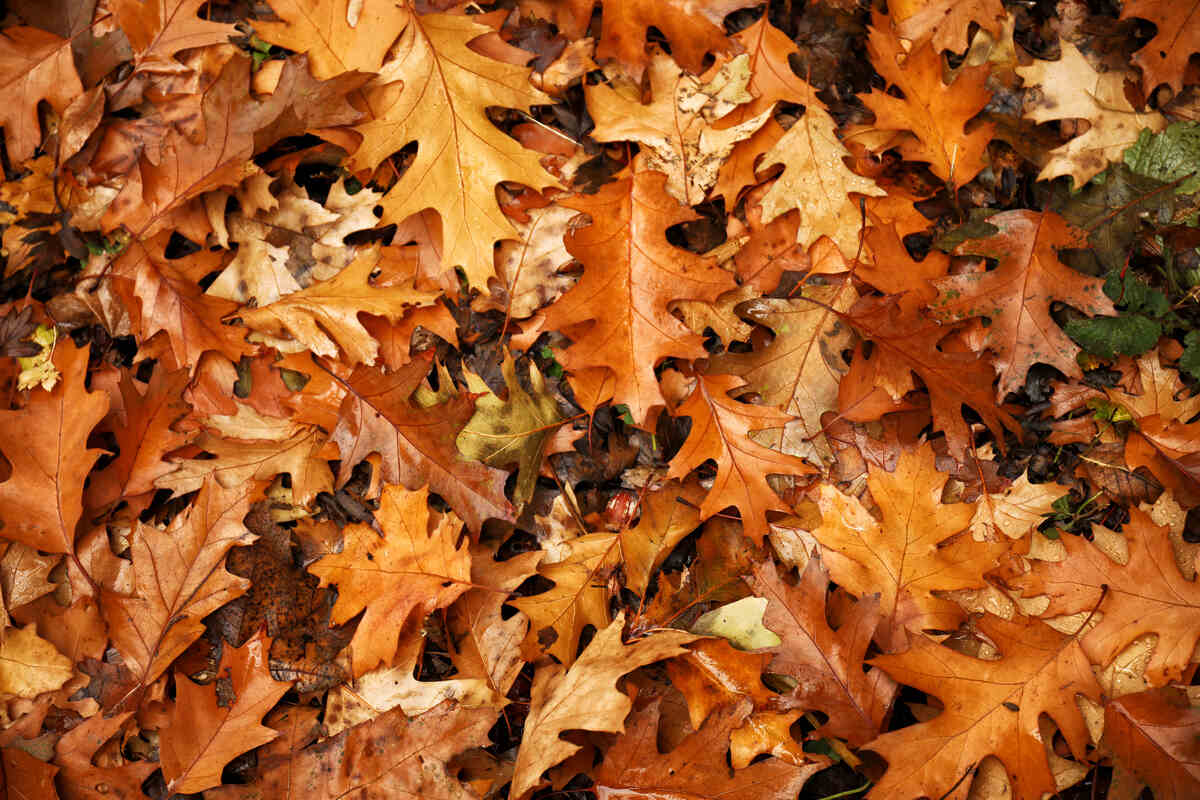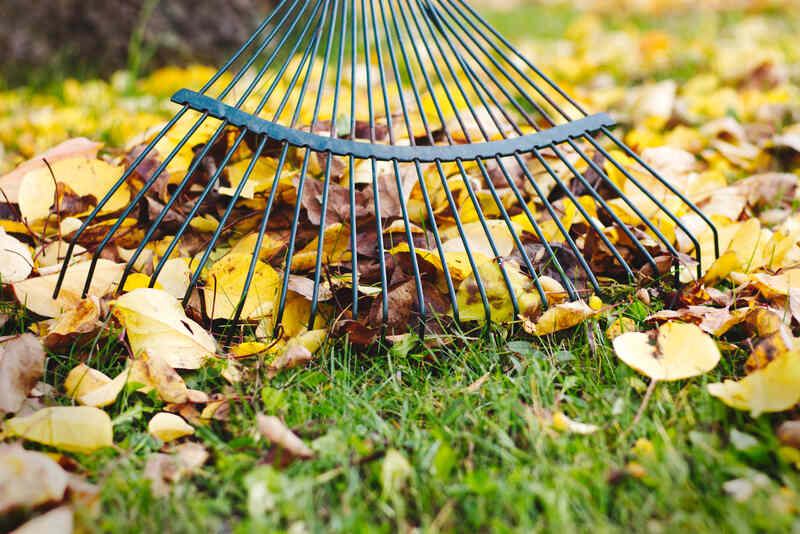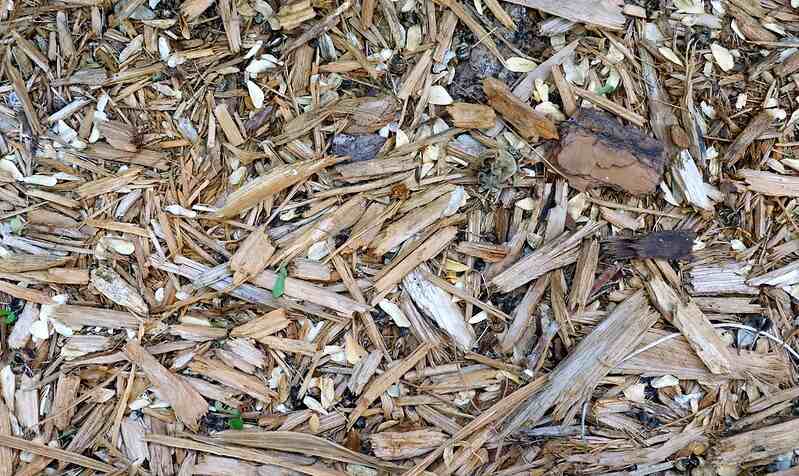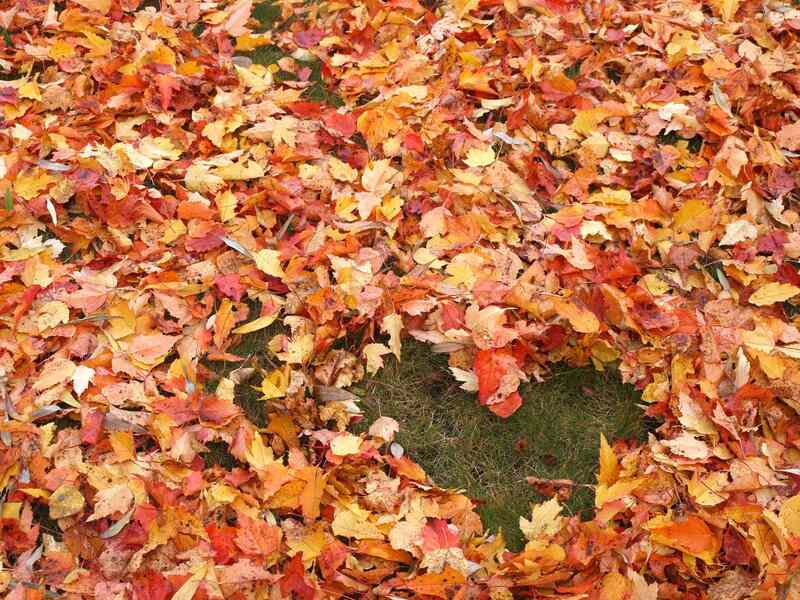
Don’t know what to do with fallen leaves? Most homeowners rake them, while others make compost out of the leaves. It’s also possible to use the leaves for decorative crafts or turn them into mulch or leaf mold.
With its beautiful colors of gold, yellow, orange, and red, fall foliage is truly Instagram-worthy. But it’s not so picture-perfect anymore once the leaves fall on the ground. And you’ll want to deal with the fallen leaves before they rot on your lawn.
7 Things to Do with Fallen Leaves
A lot of homeowners are not fond of fallen leaves, especially if they’re the ones who need to clean up the yard. There’s a thin line between being rustic and utterly chaotic, and a yard full of leaves can easily cross that boundary.
Some cities or counties collect leaves raked neatly into the streets. But if your city doesn’t have leaf pickup programs, it would be a waste to throw the leaves away. Instead, you may want to recycle the leaves. After all, these are free organic stuff you can use for your lawn and garden.
To give you an idea of what to do with fallen leaves, here are the most common and fruitful options:
1. Rake the Leaves

Layers of leaves can deprive your grass of the light and air it needs to survive. So, it’s crucial to get these off the ground first. While you can use a leaf blower or a mower to remove them, the time-honored method is to rake them.
Here are some tips if you’re up for burning calories while dealing with fallen leaves:
Use a Leaf Rake
With its fan-shaped metal, bamboo, or plastic tines, a leaf rake can be easy on your lawn. Plus, a wide fan can pull more leaves with each pass. But if leaves have piled under shrubs or in garden beds, you can use a shrub rake, which looks like a mini garden rake.
Know When to Rake
Experts recommend raking when 20% to 30% of the leaves have fallen. However, it would still depend on various factors. According to Nick Pauly, lawn care expert and owner of Denver Home Pros, “It’s highly dependent on the climate you live in, the type of trees you have, and if you have grass under these trees.”
He strongly advises against letting fallen leaves pile up and decompose on your lawn, as it can suffocate a once-healthy lawn. The grass could potentially die, especially if the fallen leaves are paired with sleet or snow.
Pauly added, “In Colorado, we can get away with numbers closer to 50-65% of leaves falling before the first round of raking. However, I could see how states with higher moisture content in the air could recommend raking sooner to avoid leaf rot.”
Use a Tarp to Remove Leaves
To avoid making multiple trips when disposing of the leaves, you can simply rake them onto a tarp. Once the tarp is full (but not overflowing), close it by grabbing the ends. If you’re using a large tarp, you may need help closing it. Then, drag the tarp full of leaves to the area where you plan to work with them.
If you don’t have the time or energy to rake leaves, you can hire someone to do it for you. Most homeowners spend around $300 for professional leaf removal.
2. Make Organic Mulch For Plants

Do you want to make organic mulch for your garden? You can use the fallen leaves as the raw material. It’s free, and you won’t have to worry about disposing of them. This type of mulch can provide your plants with nutrients while maintaining moisture, blocking weeds, and protecting roots.
Here’s the quick process for making mulch from fallen leaves:
- Shred the leaves. Rake the leaves, pick them up with a leaf blower vacuum, or use your lawn mower to run over the dried leaves and collect the bits in the mower bag. Then, dump the leaves into a trash can and shred them with a weed trimmer.
- Distribute. You can dump the leaf bits straight from the bag or transfer them to a tarp or bin for more control. The layer of mulch should be around 3 to 6 inches for trees and shrubs, while 2 to 3 inches of mulch should be enough for flower and vegetable gardens.
3. Use the Leaves as Mulch For Your Lawn
Still don’t know whether to rake or mulch leaves? With raking, you can finish the job faster. On the other hand, mulching offers more benefits.
Besides trees and plants, your lawn also can greatly benefit from mulch. Steph Sosinski, Home Horticulture program manager at the University of New Hampshire Cooperative Extension Food and Agriculture, agrees that mulching offers a lot of benefits, including increasing the soil temperature. Like a blanket, mulch can keep the grass warm as the cold season progresses.
Similar to making garden mulch, mulching leaves directly into your lawn is easy. Simply shred the dry leaves with your mower. And instead of bagging the leaves, you can just leave them where they fall on the lawn. Doing so will allow the leaf bits to settle between the grass blades, where microbes will start decomposing the leaves.
4. Make Compost Out of the Leaves

Another thing you can do with fallen leaves is to make compost. Who can say no to free organic fertilizer? Vincent Cotrone, Urban Forestry extension educator at PennState Extension, said that you can get around $50 worth of plant food from the leaves of a large shade tree. So, if you have several large trees, imagine how much you can save on plant or lawn fertilizer.
To start composting:
- Decide where to compost. You can build your own compost container or purchase a bin or a compost tumbler. Another option is to start a compost pile in your backyard.
- Gather the compost materials. You’ll need a balanced mix of green (nitrogen-based) and brown (carbon-rich) materials for your compost. Green materials include eggshells, grass clippings, and coffee grounds. For the brown materials, that’s where your fallen leaves come in. Other brown materials include twigs, paper, and cardboard.
- Maintain the pile. Keep the pile moist with enough water, but don’t overwater it. Turn the compost pile every week to give the microbes enough oxygen to work properly.
5. Amend the Soil With Leaf Mold
If you find it hard to create compost, leaf mold is a great alternative. While it sounds like a lawn disease, leaf mold is actually leaf litter or decomposing leaves that can add organic matter to the soil. It can act as a natural soil conditioner and help with soil moisture retention.
In fact, various studies show that using leaf mold in the garden increases yield and plant health and makes plants more resistant to disease.
To start a batch of leaf mold:
- Make a pile of leaves. The leaves of deciduous shade trees are best since they decompose more quickly than evergreen leaves. Whether you pile the leaves in an out-of-the-way spot or put them in a bin or garbage bag, you can speed up the process by shredding them.
- Keep them damp. While fungi need adequate moisture to spread, remember not to overwater. And for even decomposition, turn the pile occasionally.
- Be patient. Depending on the type of leaves used, you might have to wait a year or two before placing the leaf mold in your garden or around your landscaping plants.
Note: Decomposed leaves won’t offer much nutrition to your plants. Apart from using leaf mold, you’ll still need to apply fertilizer or your own organic compost.
6. Use the Fallen Leaves as Decoration

Another way to recycle fallen leaves is to use them in seasonal crafts. Here are a few leaf craft project ideas for you and your kids:
- Form a “flower” arrangement with twigs and leaves.
- Adorn your mantel with branches and leaves.
- Create a natural wreath using twigs, twine, and leaves.
- Press leaves onto parchment paper, frame, and display.
- Make an autumnal garland for your stairway or door frames.
My personal favorite is making bookmarks out of leaves. If you don’t have a laminator, you can use clear tape to preserve fresh or dried leaves.
7. Protect Animals and Plants from the Cold
If you live in an area with harsh winters, you can use fallen leaves to shelter animals and plants from the cold. Several inches of leaf layer typically accumulate under trees or shrubs in the fall. Untouched, these leaves provide shelter and protection to beneficial insects, birds, and animals like chipmunks and toads.
To provide shelter for backyard animals, you can blow the fallen leaves into your tree line or pile them along your fence.
If you also want to protect your plants from the cold, you can insulate them by spreading 2- to 3-inch layers of shredded leaves in the garden. Doing so can help keep the soil temperatures consistent. Avoid using whole leaves, as they’ll prevent water from reaching plant roots.
FAQ About Fallen Leaves
Can I Use Leaves From Any Tree as Mulch?
No. Some leaves have chemicals that can stunt plant growth or prevent plants from growing altogether. For instance, walnut leaves contain juglone, which prevents the growth of other plants. Another example is eucalyptus. Since it contains flavonoids, tannins, and phenolic acids, it can prevent some plants from germinating.
Why Do I Need to Shred the Leaves Before Turning Them Into Mulch?
Chopping or shredding the leaves before turning them into mulch can help them break down faster. If left whole, leaves can clump together and suffocate your grass. Clumps of dead leaves also harbor mold and fungus that can destroy your lawn.
Is it Okay to Burn Fallen Leaves?
No. In fact, some states even consider this act as illegal. But even if local laws allow burning leaves in your area, it’s not recommended to do so.
Apart from possibly causing a wildfire, burning fallen leaves can be harmful to your health. The smoke contains toxic particles that can irritate the lungs. These tiny particles can accumulate over time in the lungs and remain there for years.
Leave the Fallen Leaves to the Pros
With so many things to do with fallen leaves, you won’t have a reason to let them decompose on your lawn. But if the thought of raking and shredding leaves is too much for you, consider calling a local professional landscape company. Local pros have the equipment to collect your leaves more quickly and efficiently than you could do on your own.
Main Image Credit: Pixel-Shot / Adobe Stock Free / License